Hell with no way out. And people ready to fight for the impossible. These stories deserve to be brought to the cinema screens. And for sure - they deserve our memory.
In June 1942, four prisoners decided to escape from KL Auschwitz. They were Kazimierz Piechowski, imprisoned in the camp for an attempt to enter the Polish army in France, a young participant in the underground movement, Stanisław Jaster, a Ukrainian mechanic, Eugeniusz Bendera, and a priest from Wadowice, Józef Lempart. Their plan was simple but spectacular:they broke into an SS warehouse, from where they took uniforms, weapons and food. Then, disguised as guards, they stole the Steyr 220 officer car from the garage and headed for the main camp gate.
Like in a Hollywood movie…
They did not have any passes, but thanks to Piechowski's excellent German, who came from Tczew in Pomerania, they easily passed subsequent posts. When the guard at the last barrier was reluctant to pick it up, Piechowski, dressed in an officer's uniform, shouted at him: Goddamn it! Are you sleeping there, asshole or what? Open this barrier or I'll wake you up!
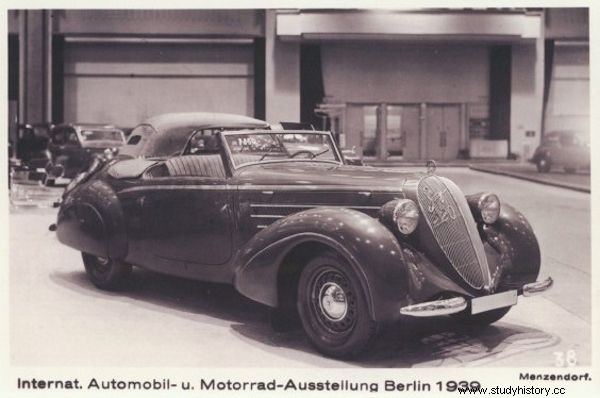
Escape from the camp in the SS car? Such a maneuver was successful for Kazimierz Piechowski and his three companions, who left the gate in the Steyr 220 car (source:public domain).
If we saw the escape from the formidable Auschwitz camp in an American film, we would consider it a fantasy of Hollywood screenwriters who do not know the realities of the war. Meanwhile it really happened! After passing the last barrier, the former prisoners happily reached the area of Maków Podhalański, where they split up.
What next?
The Germans, noticing the escape of four prisoners, organized a large-scale search operation. They awarded them with a prize of PLN 500,000. zloty. A special commission was sent from Berlin to investigate the circumstances of the incident. Seven SS officers and non-commissioned officers, who were held responsible for the escape, were sentenced to punishment to the Eastern Front. The capo of the SS warehouse, from which the fugitives stole the uniforms, was sentenced to death. 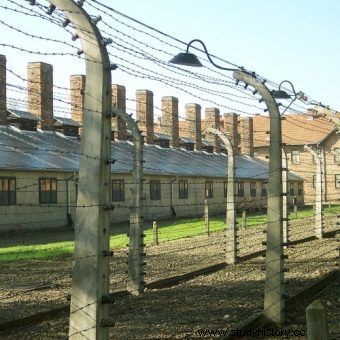
Meanwhile, what happened to the escapees? Piechowski joined the partisan unit and served there until the end of the war. After 1945, for belonging to the Home Army, he was arrested by the Security Office and sentenced to 10 years in prison. Jaster took from Auschwitz and handed over to representatives of the secret structures of the Polish state a report on the camp prepared by Witold Pilecki. He himself was then accused of treason in unexplained circumstances and liquidated ... by the Home Army. Lempart and Bendera survived the war and only died in the 1970s and 1980s.
Freedom for lovers
The escape of a couple in love between prisoners, a Pole Jerzy Bielecki and a Jewish woman Cyla Cybulska-Stawiska, was equally cinematic. Bielecki was sent to Auschwitz in June 1940 in the first transport, for an attempt to enter the Polish army in France. The greeting of the first prisoners by the SS officer Karl Fritzsch is quoted in the book Dobranoc, Auschwitz by Aleksandra Wójcik and Maciej Zdziarski:
You don't realize where you are. This is not a sanatorium. Here is a German concentration camp. You live here for three months at most, and if there are Jews or priests among you, they can live for six weeks .
No wonder Bielecki started thinking about escaping. Especially that in the camp he met a Jewish woman, Cyla Cybulska-Stawiska, who was sent to Auschwitz II-Birkenau in January 1943 from Łomża. The young people fell in love with each other, and Jerzy promised the girl that he would get them out of the camp. To this end, he gradually began to complete the SS uniform, shoes, a belt with a holster and a haversack. He obtained a pass to leave the camp, he also collected food and clothes for Cyla. He chose June 21, 1944 as the day of his escape.
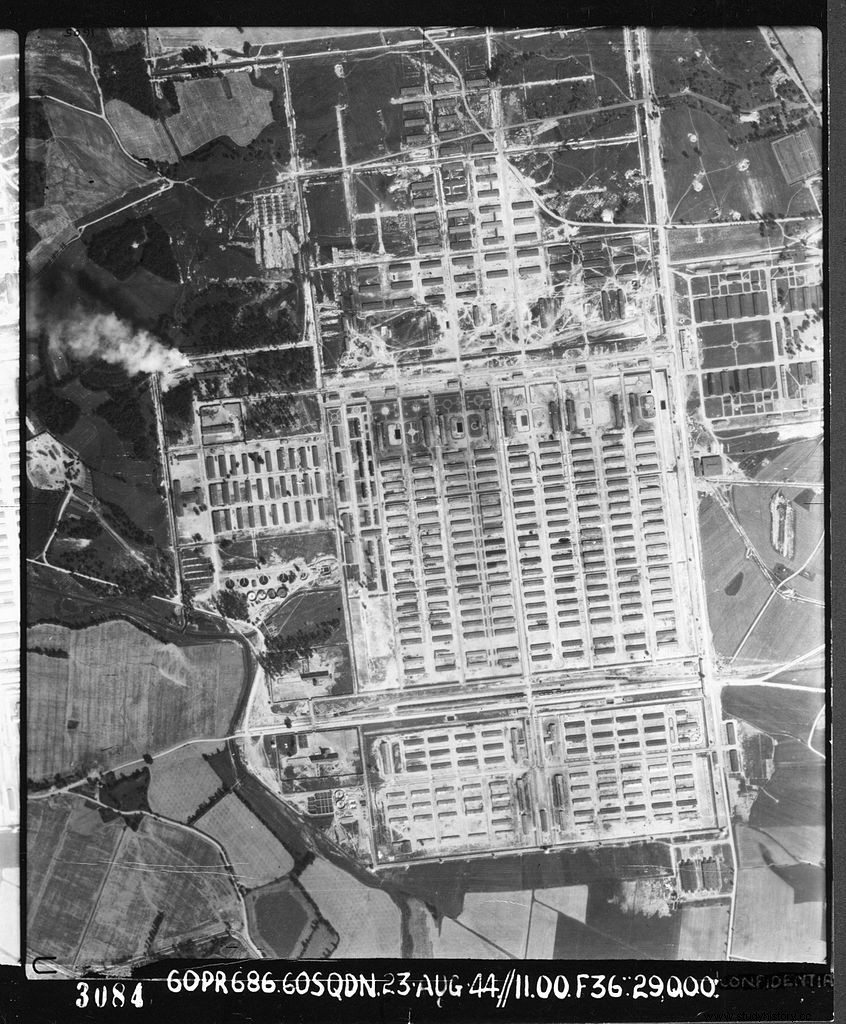
The Auschwitz camp occupied a large area, as can be seen in the photo taken by the RAF in 1944. However, it was well guarded from all sides (source:public domain).
On that day, dressed in a uniform, he went to the Cyla commando and there he announced that he was from the political department and had the order to bring the prisoner, Cyla Cybulska-Stawiska, number 29558 to the interrogation. In the commando, he was believed and the girl was handed over. He led her to the gate they had passed thanks to the pass they had obtained earlier.
After getting out of the camp, they walked at night, heading for the General Government. There they hid in the countryside with Jerzy's family. After some time, they split up for safety reasons. Cyla remained in hiding, while Bielecki joined the partisans. According to the contract, they were supposed to meet after the war.
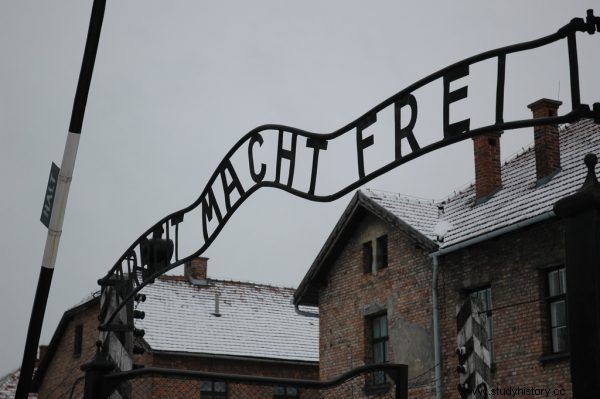
It sounds like literary fiction, but Jerzy Bielecki and Cyla Cybulska-Stawiska left the camp… just through the gate! (photo Jochen Zimmermann, license CC BY 2.0).
A tragic coincidence prevented this. She received the news that Jurek had died, and he, in turn, heard that her beloved had gone to Sweden and died there. Cyla, who at that time lived with her family in New York, found out that Jerzy was alive only in May 1983. This message was passed to her by ... a Polish woman who cleaned at her place! The woman had seen a documentary in which Bielecki told his story before. Cyla got his phone number. Soon, on June 8, 1983, she came to Poland and met her beloved. Bielecki was waiting for her with a bouquet of 39 roses - one for each year of separation.
Escape through the sewers
On March 28, 1944, nine prisoners escaped from the Majdanek camp in broad daylight. They escaped unnoticed from the camp… through sewers! The originator of the plan was Władysław Gałasiński, who engaged eight colleagues to cooperate. The conspirators split into teams of two who were given specific tasks.
The first two entered the canal and moved forward, sawing off the grates in it. The second, remaining outside, discreetly watched through the wells to see how far his colleagues had already come. The third couple distracted the local kapo by offering him alcohol in the greenhouse. The last two conspirators, pretending to be normal, as if nothing had happened in the field, waiting for a sign to join the escapees at the right moment.
Long way outside
The action initially progressed smoothly. The first two prisoners went down to the sewer and sawed off the bars:there were as many as 10 of them! After some time, other conspirators joined them. But then it turned out that moving through the sewers is not easy at all. The pipe was tight, filled with water and the foul-smelling sludge that clung to the face and the rest of the body. You also had to watch out for the wells where guards were hanging around.
Sawing off the bars was laborious and required strength, and in addition had to be as quiet as possible. Prisoners crawled several meters apart so as not to dam up the water too much. One of them, weakened, started to melt at some point ... Fortunately his friends rushed to his aid. But finally, after a long and tense crossing, the refugees reached the last, tenth, well, already behind the wires. They went through it - and they were free!

SS men, hidden in watchtowers, made sure that none of the prisoners managed to escape from the camp. (photo Jochen Zimmermann, license CC BY 2.0).
The refugees were given civilian clothes in the nearby houses. They changed their clothes and went on their way as quickly as possible. However, this was not the end of their adventures:as a twist of fate, they had to pass the commando led by guards and brutal SS man Anton Thumann returning to the camp! It was too late to turn back or change route. With a trembling heart, they passed the column and the rider Thumann ... who, fortunately, did not pay attention to them. All nine managed to reach the countryside, and from there to the forest, where the partisans took care of them.
Digging from the camp
The daring escape from the branch of the Gross-Rosen camp in Pępice near Opole was made by a soldier of the National Armed Forces, Captain Mieczysław Dukalski, nicknamed "Zapora". The Gestapo arrested him on July 23, 1944, while he was traveling by tram in Warsaw for a combat operation. Through Aleja Szucha he got to Gross-Rosen, and then to the Brieg-Pampitz branch in Pępice. In this camp there were already several hundred members of the Home Army, Peasants' Battalions and NSZ transported there from Pawiak, who formed the camp underground.
In the fall, a group of conspirators headed by Dukalski began preparations for the escape. In Dukalski's barrack, a tunnel was dug, which was supposed to end 40 meters behind the camp fence. The soil was discreetly dumped under the barracks. The excavation was half ready when one of the prisoners made a dump. Fortunately, thanks to a friendly Silesian ranger, the matter was covered up, but the plan was burned.
Escape in the truck
In such a situation, "Zapora" developed a new concept. Together with his men, he found himself in a commando that worked outside the camp. They reloaded food, mainly alcohol, onto trucks from wagons at the Löwen railway station (Lewin Brzeski). The plan was to disarm the guards, hijack a truck and flee to the General Government.
The action began on January 5, 1945. The guards were lured to the truck's hut, drunk with alcohol, and then easily disarmed. Several conspirators changed into the uniforms of the guards. The vehicle with 29 prisoners then headed towards the border with the General Government. They drove through Opole without any problems and the road leading to Częstochowa was found.
Unfortunately, just outside the city, the fugitives came across a gendarmerie car. At the rear, a German truck was approaching them. Panicked conspirators began to jump out of the car and run as quickly as possible into the forest. The escape is released…
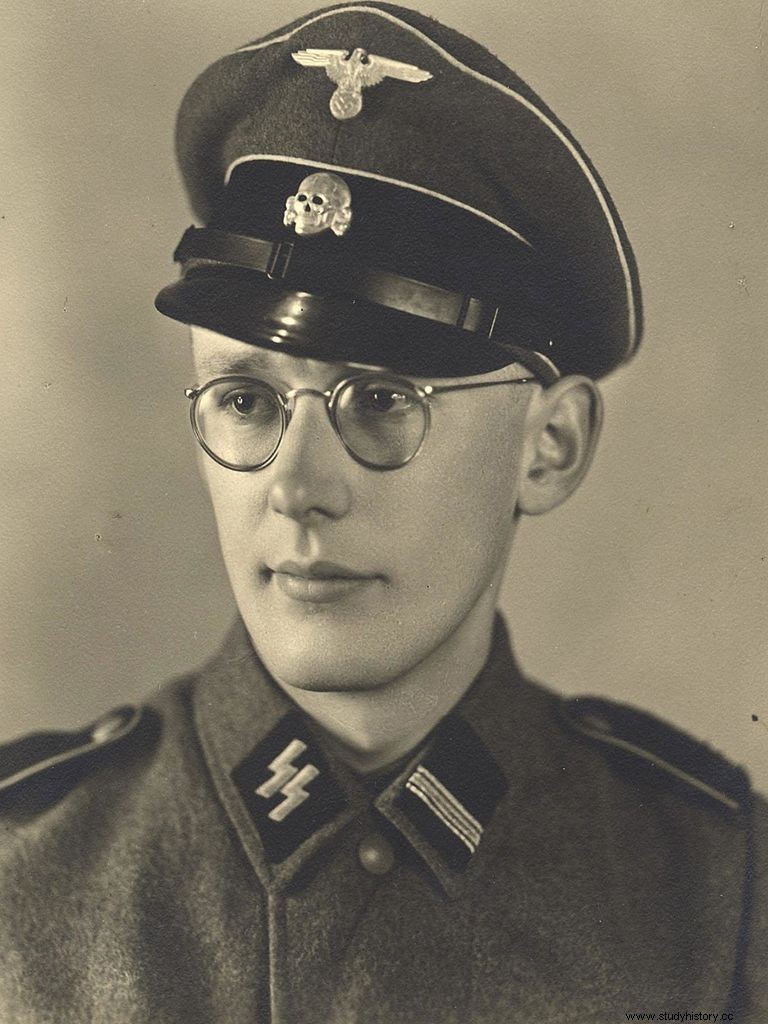
Some prisoners, especially those who spoke German fluently, managed to escape from the camp in an SS uniform. It was very distinctive, as can be seen in the photo of Oskar Gröning, a guard at Auschwitz in 1942-1944 (source:public domain).
However, Dukalski did not lose his cool blood. He stopped the Germans with a few shots, allowing his men to hide among the trees. There, he divided them into small groups and ordered them to independently break through to the border of the General Government, 60 kilometers away. With his group of guerrillas, he headed that way… for seven days! They slept during the day, marched at night, avoided human settlements. However, their luck was not in their favor:on January 12 they were taken by a German pursuit.
The almost successful escape made a great impression on the Germans. Its echoes reportedly reached Berlin! Dukalski was sentenced to death, but the approaching end of the war, confusion and ... German bureaucracy meant that he managed to wait for liberation.
